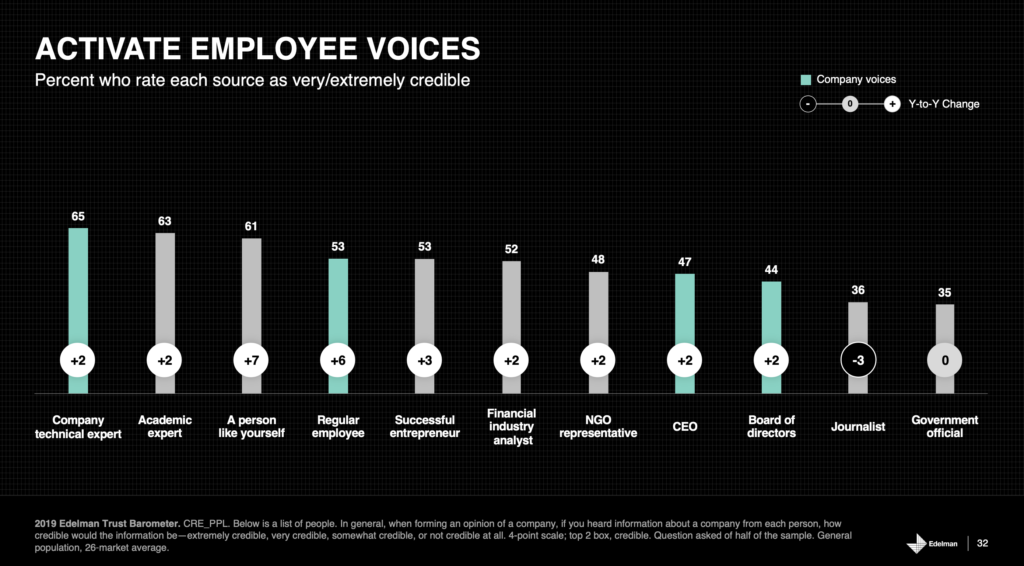One key theme I’ve pushed for a while now is the importance of companies and organisations bringing their experts out from the cubicle and placing them fairly and squarely (and strategically) into the public spotlight.
In other words, rather than hide your experts away from public view, empower them to get ‘out there’ in the marketplace: Out, loud and proud being useful, helpful, interesting, engaging … even provocative if required!
‘Out there’ is a technical term folks 🙂
This could manifest itself in a number of ways. For example, a company’s in-house technical experts could undertake any number of public-facing communications activities, including blogging, podcasting, live-streaming or featuring on YouTube videos, writing whitepapers, tweeting, sharing content on LinkedIn, speaking at industry events etc.
And of course, if your organisation’s leaders are prominent on social channels as well, more’s the better!
These activities can all be structured with purpose and strategic intent and, importantly, aligned with a company’s ongoing communications program.
From my experience, I see three big reasons why an organisation should make rockstars of their technical experts by empowering them to publicly share their knowledge and expertise, as well as engage personally with customers, media and other relevant organisational constituents.
Here they are:
ONE – People trust internal experts as a source of information for a company
According to the Edelman Trust Barometer (see slide below), we trust company technical experts more than anyone. Interestingly, this has been the case for many years.
Accordingly, having your internal experts creating content and conversing with the public via social media will help increase the level of trust people have in your organisation.
Of course, such activities can also lead to speaking and media opportunities, further enhancing the rockstar status of individual experts and thought leaders within the community or industry in which you operate.

TWO – Puts a ‘human face’ to your organisation
The ‘humanisation’ aspect of marketing and organisational communications gets scant attention or respect from many business leaders, probably because it hasn’t got an obvious ROI ‘stamped on its forehead’. But it’s critically important.
When we see an open, human and transparent organisation in action – the way they communicate, the unfettered two-way engagement they have with their community (and more often than not, these companies DO have a community of fans, advocates and supporters of what it is they do and stand for) – it’s bleedingly obvious to see the positive benefits resulting from such a ‘halo effect’.
Examples of ‘human’ organisations include Buffer, Goulet Pen Company, Moz, Envato, charity: water, Asylum Seeker Resource Centre.
In its purest sense, social media and online publishing platforms are brilliant for helping a company showcase its people, including its leaders, and this is what the public gravitates towards.
Having your people produce content for the company’s online channels adds humanity, credibility and value to your brand. You can’t buy this credibility or value, it needs to emerge organically from within your organisation, earned at the coal-face. Of course, education, direction and guidance will help the process develop more quickly.
I’m a firm believer in the saying that people don’t do business with logos, they do business with humans. Get the human element right – and having your experts to the fore adding value is part of this equation – and you increase the chances of prospective customers developing greater affinity and connection with your brand.
THREE – Differentiates your brand from that of your competitors
We live in an era of increased product and service parity, when it’s often difficult to tell one company from another. So much so it’s often only a company’s brand – their reputation in our eyes, or our collective experience of having dealt with them across multiple touch-points – that influences our decision as to which entity we choose to do business with, or recommend to others.
But we also live in risk-averse times that see many organisations – especially larger ones – going into their shells, refusing to open up on social channels in a way that’s, errr, social. They don’t let their people (officially via company online channels) post blogs , publish videos or tweet. Chances are, their logo has no personality and the walls of the boardroom are beige. Okay, I might be being a tad facetious here 🙂
Of course, this ‘corporate personality bypass’ spells opportunity for others in the same market to differentiate themselves. And no, I don’t mean painting the walls of the boardroom red, but rather, focus on strategically creating a public-facing expert visibility program as a way of building a ‘moat of uniqueness’ around your brand.
Just think, no-one is going to be able to replicate the army of talented and smart experts you have out in the marketplace creating useful content and engaging with customers, influencers and advocates en masse.


